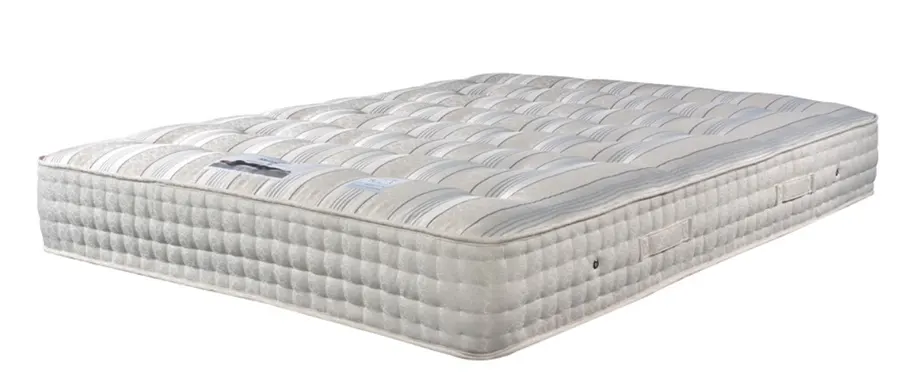What is the source of allergies?
Allergies are a very person-to-person thing, however some causes are more common. Doctors suggest that dust mites and their droppings increase the overall weight of a pillow over time. Findings have concluded that about a tenth of the weight of a pillow used for a couple of years is composed out of mites (alive or dead) and their biological waste.
Encasing pillows in woven covers will ensure that the mites can’t reach their source of food – you. Your dead skin and sweat, to be precise. Not the most pleasant thought, but highly beneficial if you tackle it the right way. The same process applies to hypoallergenic mattresses. Pores within the protective material have to be no more than 10 microns. This is simply due to the fact that the dust mites are incredibly small, and narrow pores are keeping them at bay.
I'm allergic – what mattress is a no-no?
Any mattress that is based on an inner spring system should be avoided by consumers that are allergy prone. Spring mattresses have coils inside them that are within cavities inside the mattress itself. This is very fertile ground for dust mites to incubate, simply due to their food (your dead skin) and their waste to be accumulated in said cavities. The heat transfer from your body more often than not causes mold and mildew to accumulate, increasing the weight of the mattress much like the pillow.
Coil based mattresses increase in weight over time and some can get ridiculously heavier over time. After constant user over a period of 5-10 years, coil mattresses can weigh a couple of times more than their original weight. This is why most hypoallergenic mattresses are made out of materials that don't rely on conventional solutions like coils or springs. Latex and memory foam are used predominantly for such mattresses in order to avoid springs.
What are the good choices for hypoallergenic mattresses?
The hypoallergenic benefits of these mattresses are pretty much the same. The technology doesn’t vary for different mattress materials. This makes the choice come down to personal preference – memory foam or latex. Honestly, both materials are great and suit people differently based on their weight, temperature, sleeping patterns, etc. The only solution here is to try and see what works best for you. You can check our general guide on choosing a mattress.
Latex mattresses have premium comfort qualities such as casings made out of layered cotton or silk. The material itself is contouring to the size of your body with relatively low heat transfer. If you live in a hot area or get hot yourself during the night – you will definitely prefer latex over memory foam when picking a hypoallergenic mattress.
Conclusion
Hypoallergenic mattresses are basically regular mattresses with narrow pores that prevent dust mites from causing allergic reactions within sleepers. The mattresses have to be filled with materials (no cavities) for the process to fully work, limiting the choice to memory foam or latex for the materials available. If you are someone having allergic reactions often, we suggest trying out a hypoallergenic mattress.
It is not a miracle cure, but is highly helpful with tackling the link between allergies and dust mites. Disregarding this link as a potential cause only prolongs the allergic reaction, causing more health problems down the line. So, while a decent choice for some, not everyone needs a hypoallergenic mattress.















There are no comments yet
"*" indicates required fields